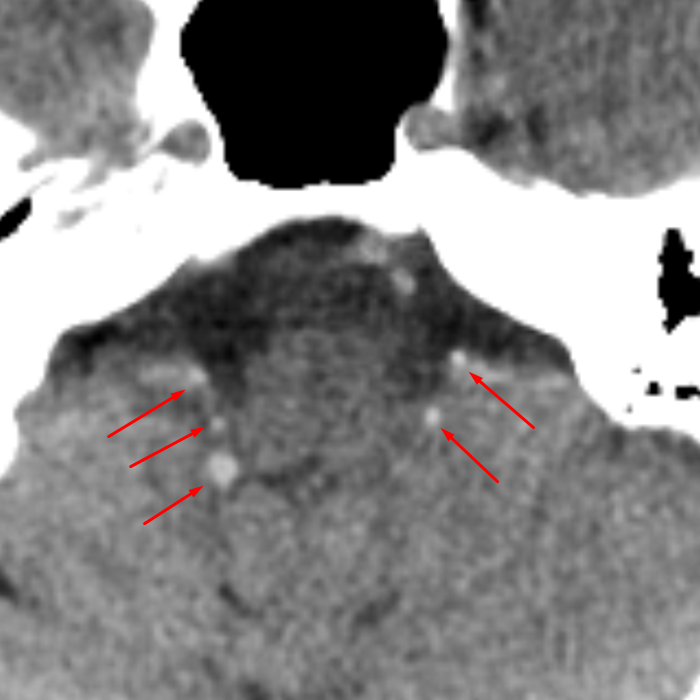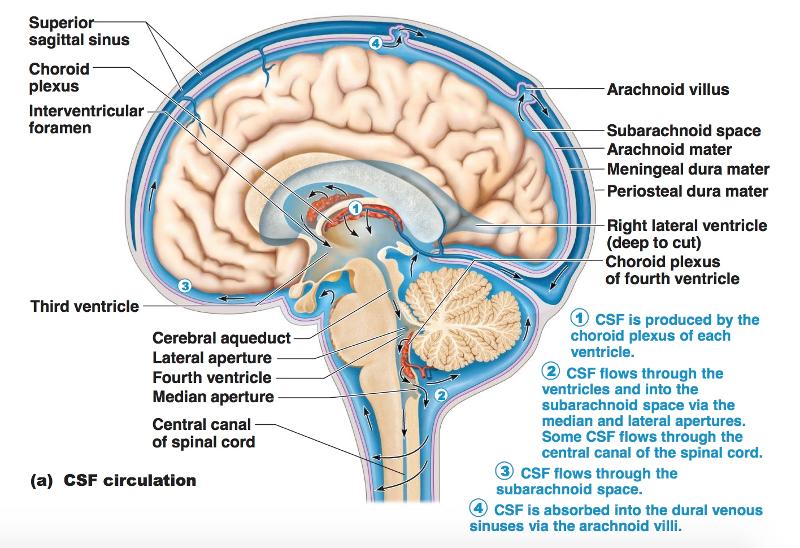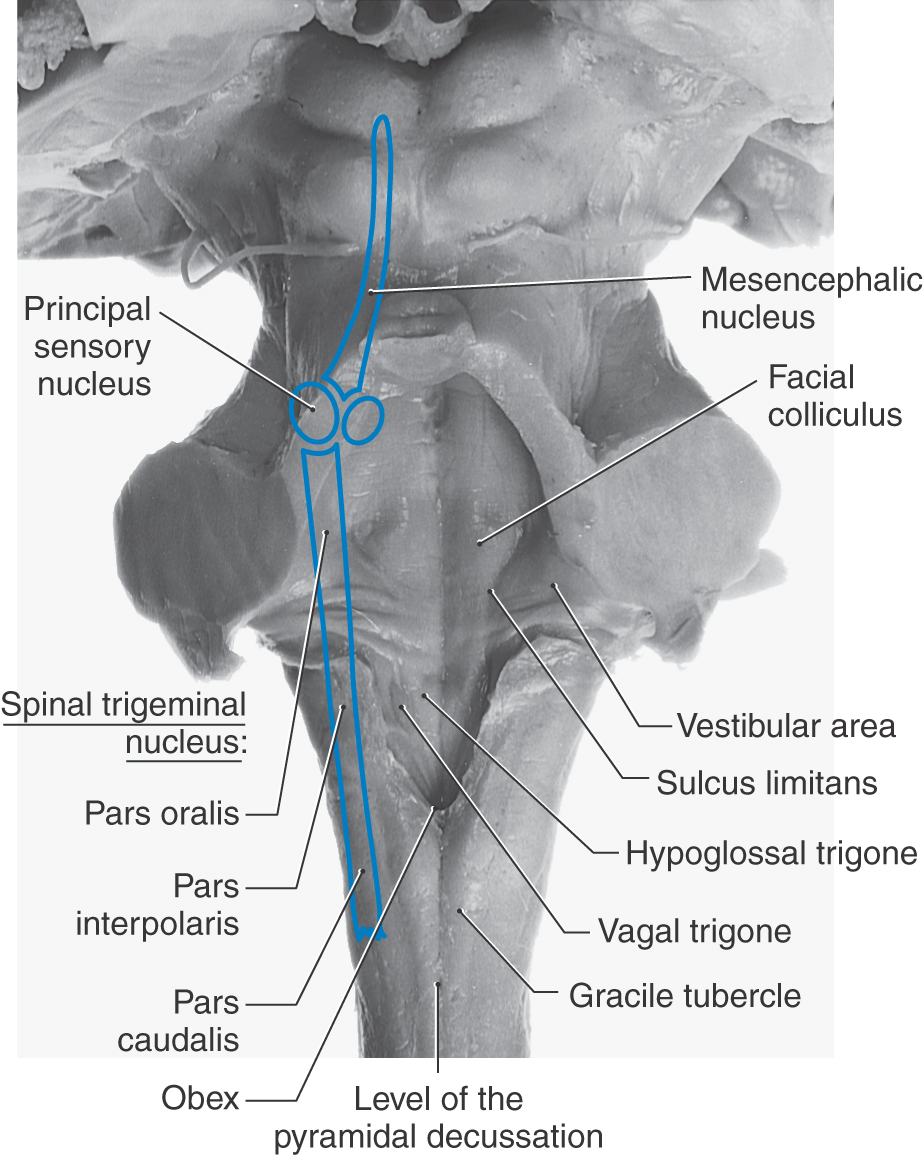
Numerical simulations of different models describing cerebrospinal fluid dynamics bioRxiv
lateral foramina of Luschka: Also known as the lateral aperture, an opening in each lateral extremity of the fourth ventricle of the human brain that provides a conduit for cerebrospinal fluid to flow from the brain's ventricular system into the subarachnoid space. EXAMPLES.

Microsurgical anatomy of the foramen of Luschka in the cerebellopontine angle, and its vascular
The lateral apertures (of Luschka) (also known as the foramina of Luschka) are two of the foramina in the ventricular system and link the fourth ventricle to the cerebellopontine cistern. Together with the median aperture (of Magendie) they comprise two of the three sites that CSF can leave the fourth ventricle and enter the subarachnoid space.
Foramen Luschka
The uncovertebral joints, also known as the joints of Luschka or neurocentral joints, are the four pairs of plane synovial joints between the vertebrae C3-C7. They are found lateral and anterior to the intervertebral foramina, on each side of the relevant intervertebral discs.

28 Endoscopic Magendie and Luschka Foraminoplasty Neupsy Key
Jaspreet Johal, Phillip Barrett Paulk, Peter C. Oakes, Rod J. Oskouian, Marios Loukas & R. Shane Tubbs 948 Accesses 6 Citations Explore all metrics Abstract Purpose The purpose of this review is to comprehensively review the foramina of Luschka in regard to their discovery, embryology, anatomy, and surgical relevance. Methods

Choroid Plexus in Foramina of Luschka
The lateral aperture of the fourth ventricle or foramen of Luschka (after anatomist Hubert von Luschka) [1] is an opening at the lateral extremity of either lateral recess of the fourth ventricle opening anteriorly [2] into (sources differ) the pontine cistern [2] / lateral cerebellomedullary cistern [3] at cerebellopontine angle. [3]

Table 11
foramen of Luschka noun foramen of Lusch· ka -ˈlu̇sh-kə : either of two openings each of which is situated on one side of the fourth ventricle of the brain and communicates with the subarachnoid space Dictionary Entries Near foramen of Luschka foramen magnum foramen of Luschka foramen of Magendie See More Nearby Entries Cite this Entry Style

(PDF) Microsurgical anatomy of the foramen of Luschka in the cerebellopontine angle, and its
The foramina of Luschka (FOL) are counted as a considerable microsurgical corridor to the floor of the fourth ventricle. Understanding the patency of FOL can potentially improve tetraventricular microsurgical and neuroendoscopic approaches.

Figure 2 from Choroid Plexus Papilloma of Foramen of Luschka Semantic Scholar
6 PMID: 29339320 DOI: 10.1016/j.wneu.2018.01.037 The foramen of Luschka is a natural aperture between the fourth ventricle and the subarachnoid space at the cerebellopontine angle. Membranous closure of this foramen is referred to as primary obstruction.

The Ventricles, Choroid Plexus, and Cerebrospinal Fluid Clinical Gate
transmit choroid plexus through the foramina of Luschka into the adjacent subarachnoid spaces. The fastigium is a triangular, blind-ending, dorsal midline outpouching that points towards the cerebellar vermis. The fourth ventricle gradually narrows as it courses inferiorly, forming the obex.
What is the position of foramen of magendie, foramen magnum and luschka?
Background: The German Anatomist Hubert Von Luschka first described the foramina of Luschka (FOL) in 1855 as lateral holes in the fourth ventricle. By his discovery, he refuted previous beliefs about the lateral recess as blind ends of the fourth ventricle, proving the continuity of the ventricular system with the central canal of the spinal cord.

Microsurgical anatomy of the foramen of Luschka in the cerebellopontine angle, and its vascular
The CSF finally leaves the fourth ventricle through the foramen of Magendie and the foramina of Luschka to reach the subarachnoid space surrounding the brain. Each lateral ventricle lies within a cerebral hemisphere.

Figure 1 from Choroid plexus papillomas of the foramen of Luschka MR appearance. Semantic Scholar
The fluid (cerebrospinal fluid) is produced in the ventricular system of the brain. There are four such hollow spaces in the brain that house cerebrospinal fluid (CSF): two lateral ventricles, a third ventricle and a fourth ventricle. This article will look at the structure of this system and how it helps the brain. Contents Choroid plexus

Chapter 12 The CNS (Brain and Spinal Cord) Flashcards Easy Notecards
Gender: Female. ct. Bilateral linear calcification in the 4th ventricle extending laterally though the foramina of Luschka, represent choroid plexus calcification. This can mimic interventricular hemorrhage. Marked choroid plexus calcification in the lateral ventricles. No acute infarct. Old bilateral insular ischemic changes.

Image result for foramen of monro and luschka Cerebrospinal Fluid, Occipital, Spinal Cord
The foramen of Luschka is a natural aperture between the fourth ventricle and the subarachnoid space at the cerebellopontine angle (CPA). The microsurgical anatomy of the foramen and the related neurovascular structures is well described in the literature. 1, 2,.

VENTRICLES AND THE CEREBROSPINAL FLUID Neupsy Key
Background: The foramen of Luschka is a natural aperture between the fourth ventricle and the subarachnoid space at the cerebellopontine angle (CPA). Membranous closure of this foramen is referred.

An Overview of the Brainstem Clinical Gate
The son of a forester, Hubert Luschka was born on July 27, 1820 in Konstanz in the southwest corner of Germany. Interestingly, his hometown was the location of the Council of Konstanz, which condemned Bohemian reformer, Jan Hus, to death in 1415 for his criticism of the Catholic church. 1 Luschka was the eighth of 12 sons.